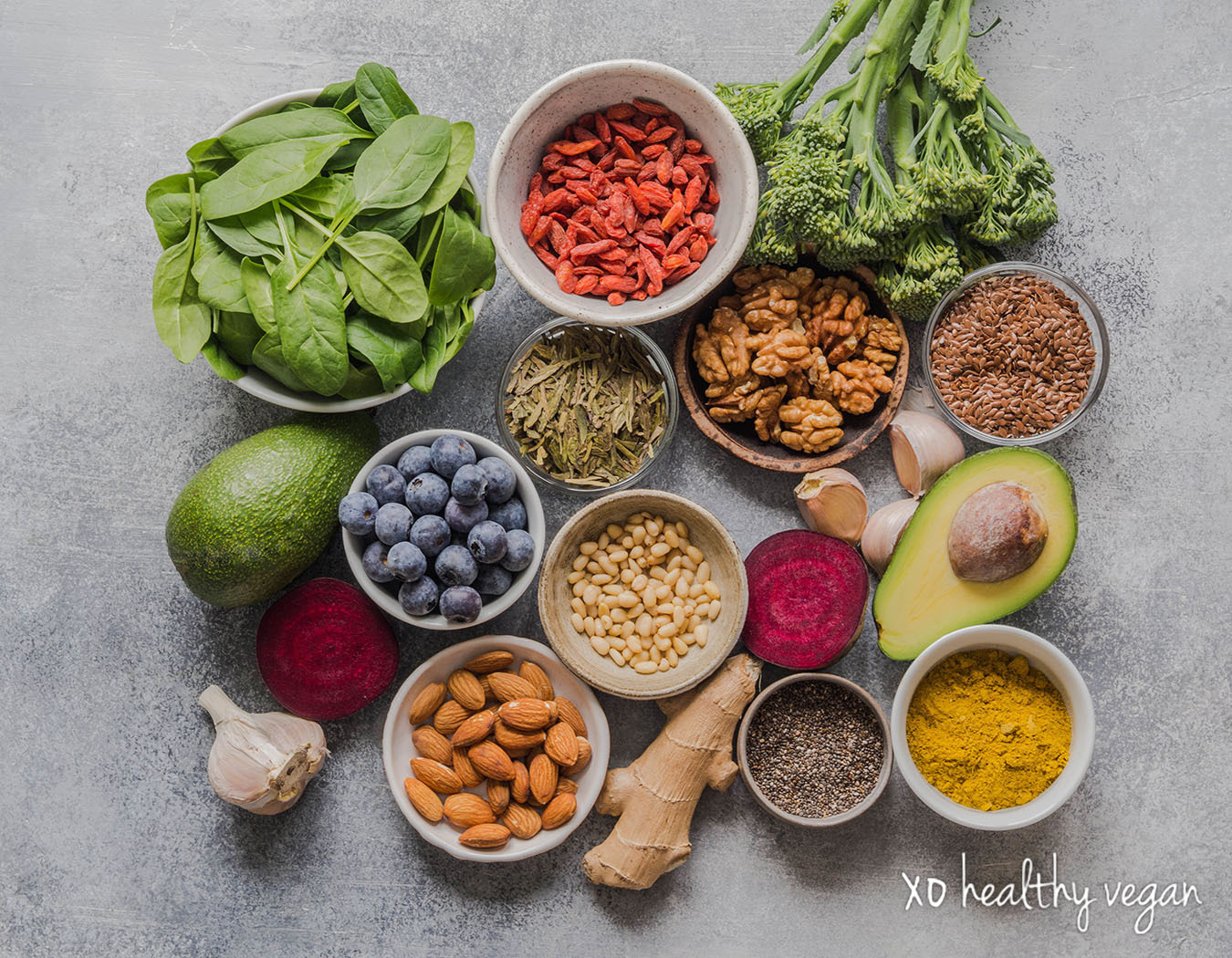Superfoods have been part of the vegan lexicon for almost as long as I can remember, and from day one, I’ve been integrating them into my life. So what are these buzzworthy “foods,” anyhow—and which ones are really worth their oft-hefty price tag?
The Oxford English Dictionary defines a superfood as “a nutrient-rich food considered to be especially beneficial for health and well-being.” Not surprisingly, most superfoods come from plants, and they give us a concentrated nutritional boost whenever and however we eat them.
Through years of experimentation, I’ve narrowed down a selection of the superfoods that really work for me, giving me clean energy, a feeling of internal balance and harmony, and a sense of wellbeing when I consume them.
If you’ve flirted with the idea of incorporating superfoods into your meals but felt overwhelmed by all the marketing jargon, use my tried-and-true experiences as a jumping-off point and see which ones resonate with you.
Colleen’s Top 10 Favorite Superfoods ...
- Maca
Maca is a root vegetable that looks a bit like a parsnip and is cultivated in the Andes Mountains of Chile and Peru. You’ll find it most often in powder form, and it is known as a hormone regulator. I add a half-teaspoon to my morning cacao (it has a slightly sweet and nutty flavor on its own) and love the subtle lift it gives me. - Cacao
No surprises here: cacao is probably my favorite superfood of them all! The fruit of the cacao tree is loaded with beneficial minerals that support health, and even boast neuromodulators that can help improve our mood. These are just a couple of reasons I drink it as a hot elixir instead of coffee, add it in the powdered form to smoothies, and sprinkle cacao nibs on my acai bowls. - Turmeric
This knobby root resembles ginger on the outside, but inside, it is a vivid yellowy-orange (watch out: it stains!). South Asians have used it for millennia in their regional cuisines as a spice, and also as a potent medicine. It is exceptionally anti-inflammatory, and helps fight free-radicals that damage our body’s cells. Try stirring it into a golden latte with warm almond milk, vanilla, and a pinch of cinnamon. - Goji berries
Like hemp backpacks and granola, goji berries are something of a vegan cliché, but there’s a good reason so many of us—including ancient Chinese cultures—have been eating them forever. Like turmeric, they are potent antioxidants with a special affinity for supporting eye health and vision. Add a tablespoon to your next smoothie or oatmeal bowl for sweetness, texture, and wellness. - Mulberries
Chewy, sweet, and slightly tart, dried mulberries are tasty enough to eat all on their own, but my favorite way to enjoy them is in my peanut butter cup truffles. Besides giving them a delicious texture, they offer a hearty dose of vitamin C, iron, and other trace minerals. They can also be enjoyed fresh, but can be hard to find if you don’t have a mulberry tree growing in your yard! - Carob
Carob underwent a phase in the ‘70s when it was trying to be chocolate, but today, many people, including myself, enjoy it for its own unique flavor and stellar nutritional profile (it’s a solid source of vitamins E, D, C, Niacin, B6, and folic acid). Some studies even point to carob’s cancer-cell destroying abilities! Try it in your next blueberry smoothie—the two flavors really complement each other. - Lucuma
In its native growing regions in South America, naturally sweet lucuma fruit is plucked fresh from the tree and transformed into a favorite local ice cream, but in the Northern hemisphere, it is most often found packaged as a powder and used as a low-glycemic sweetener. If you guessed that I add it to smoothies to give them extra sweetness, you would be right! - Spirulina
Also known as blue-green algae, spirulina is a good source of protein, beta-carotene, and essential fatty acids. You can find it in many forms, including powders and capsules, but I buy mine fresh-frozen from a vendor at the farmers’ market. The flavor isn’t to everyone’s taste (it has a slightly saline quality to it), so I like to hide it in salad dressings and smoothies. - Chia seeds
These tiny little grayish-black seeds puff up when soaked in liquid and give texture and heft to anything they’re blended with—not to mention a healthy dose of fiber, calcium, and zinc. Perhaps the most popular and tasty way to eat them is as a breakfast pudding. Make them at night to enjoy the next morning by stirring a tablespoon or two into your favorite plant-based milk, adding a bit of sweetener or dried fruit, topping with nuts, and letting sit in the fridge until you’re ready to enjoy. - Acai berries
These bright purple berries come from a tropical palm tree that grows throughout the Amazon river basin, and besides being potent antioxidants, some research suggests that acai berries can also reduce blood sugar and cholesterol levels. I buy the unsweetened frozen pulp and use it in smoothies and breakfast bowls, and I always feel amazing afterward!

